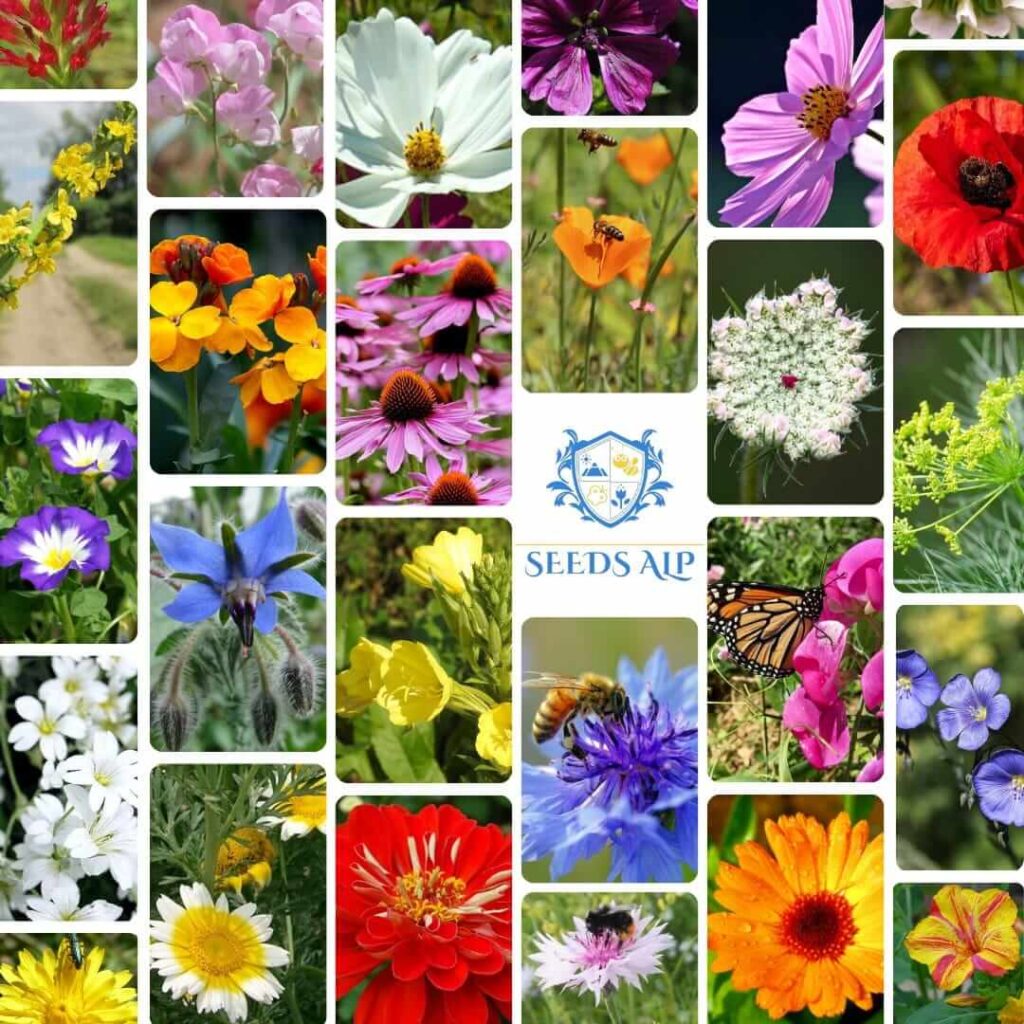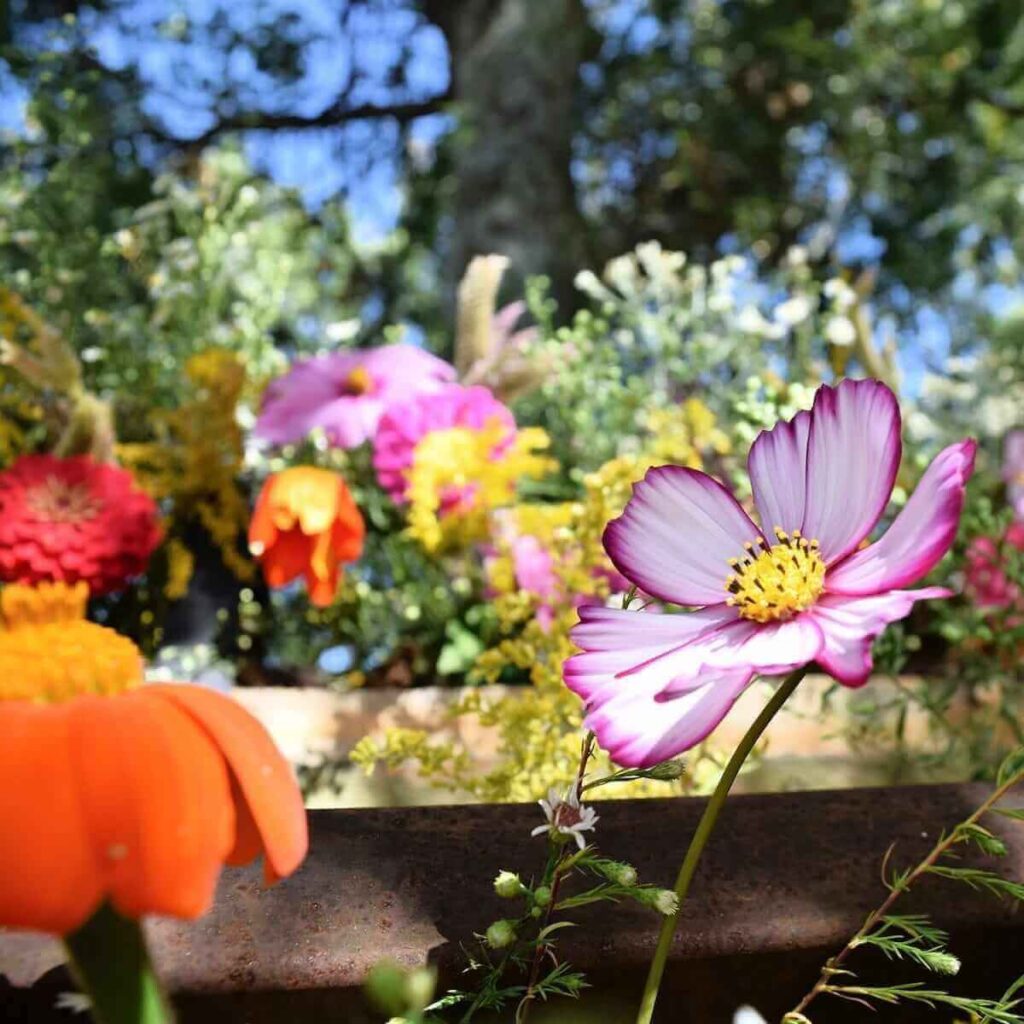Address
114 Liechtensteinstrasse Vienna - Austria
Work Hours
Everyday: 8AM - 23PM
Address
114 Liechtensteinstrasse Vienna - Austria
Work Hours
Everyday: 8AM - 23PM

Best Wildflower Seeds, you can brighten up your backyard.
Gardens provide us with the blueprints to build our own Eden, but with the added bonus of privacy. Anyone who lives in a city or an apartment will tell you how fortunate you are to have your own outdoor space, so enjoy it!
A wildflower garden will attract wildlife while providing colour and beautiful scents to your outdoor environment.
Some perennial wildflowers attract helpful insects such as lacewings, ladybirds, hover flies & parasitic wasps, which aid in the control of detrimental pests such as mites.
Choosing wildflower seeds that are both environmentally friendly and meet your vision of a nice colour scheme and design can be difficult. However, with our assistance, you will quickly find your ideal wildflower seeds!
Wildflower seeds are seed packets that can be planted in your yard to generate a colourful array of flowers. Wildflower seeds may be the way to go if you want your entire meadow to spring to life without rhyme or reason.

While wildflower seeds are ideal for your garden in the summer, they can be stored if temperatures drop low enough to kill blooms. One of the most enjoyable and cost-effective gradening practises is collecting seeds from the wildflower garden to sow the following season.
Wildflower gardening is relatively simple. There are a few factors to consider while selecting the best flower seed. To ensure that your flowers blossom, you must first ensure that the wildflower seeds are appropriate with your environment.
Continue reading to learn about the considerations to consider when purchasing wildflower seed.
When looking for the appropriate seeds, make sure that the soil in your garden matches the soil requirements of the seeds. Alternatively, you might amend your soil with sand or fertiliser to make it more suitable for the flowers you’ve chosen.
It is crucial to remember, however, that most wildflowers flourish without the use of fertiliser. As a result, if you use it without being taught, you may unintentionally create a hostile environment for your flowers.
Consider how much light the blooms require for growth when selecting wildflower seed. Many seeds require a lot of sunlight, while others prefer shade. Whatever amount of light your wildflower garden receives, there will be a matching seed.
If you have pets, make sure the flowers you’re planting aren’t hazardous to them. Horses, for example, are poisoned by foxgloves. So spend some time researching each variety of flower in the wildflower seed mix online. The safety of your pet is worth the extra effort.
If you have specific colours in mind, you may want to purchase your wildflower seed depending on the colours of the flowers. Purples, blues & pinks will have a soft impact in your wildflower meadow, while reds, yellows & oranges will give it a little more vibrancy. Alternatively, you might plant a variety of perennial wildflowers.
You could want to plant flowers that reach a certain height. This may be a significant consideration if you want your landscape to seem uniform. Some manufacturers will specify the typical size of the flowers; others may not, therefore a little online research will be required to find out.
When purchasing a wildflower seed packet, you can select seeds with similar or dissimilar environmental requirements. For example, if you are planting the seeds in a specific location, it is worthwhile to purchase seeds with the same growing requirements.
Soil type, nutrients, light, and moisture are all factors to consider. If you are dispersing the seeds across your garden, utilising seeds that thrive in different settings can boost your chances of flowers sprouting in many spots. Check the entire planting directions on the back of the packaging for more information on the growing season and soil conditions.
When browsing for wildflower seed, you may discover that several manufacturers claim to be non-GMO. GMO stands for genetically modified organism. Companies will frequently genetically edit crops to offer them specific features, such as larger kernels of maize.
Having said that, it is feasible to genetically engineer flowers to have brighter colours or any number of other characteristics. Many individuals feel that plants should be left alone as God intended.
Furthermore, some people fear that GMOs may harm pollinators. However, no evidence or indication that this is the case has been shown. As a result, if you prefer fully natural flowers, choose non-GMO wildflower seeds.
When purchasing any product, you should check to determine if the purchase promotes any good causes. For example, you may have noticed that many wildflower seed firms donate a portion of their profits to wildlife charities or use a portion of their profits to fund philanthropic activities.
These are frequently concerned with environmental issues or educating people about gardening and wildlife.
Many people are put off by the “filler” in a pack of wildflower Meadow seeds; yet, this filler will frequently include critical nutrients that will aid in the growth of the seeds.
Contact the SeedsAlp to find out what is in the filler to ensure it is beneficial to your seedlings. Alternatively, select a pack with no filler and feed any nutrients required by the blooms separately.
If you buy a lot of seeds, get a resealable pack so you can keep some for next year. Of course, depending on the shelf life of the seeds, some will last longer before being planted than others.
Many wildflower seeds are a combination of perennial, annual & biennial seeds. You may opt to purchase this mixture or just one type.
You should understand a little about each type before deciding on the ideal one for your needs. Annual wildflowers are typically planted in the spring or late autumn. Such plants must self-seed in order to produce blossoms the next year. Planting them in late spring or summer may prevent the plants from maturing and producing healthy seeds.
Biennial plants finish their life cycle in two years. If you prefer to vary the look of your garden every couple of years, this is a fantastic plant to acquire. It is also perfect for someone living in a rented apartment who knows they will not be there for long.
Perennial plants have a lifespan of more than two years. They do, however, take two years to flower for the first time, so they are best suited to folks who don’t mind waiting a little longer for a garden that will last a long time.
Annual plants germinate, blossom, and generate seeds in a single season before dying. These plants are ideal if you prefer altering your garden on a regular basis.
On the surface, it may appear that you paid the same amount for flowers that only survive one season as opposed to two. However, if you efficiently harvest and store the seeds, you won’t need to buy any more.
We select our wildflower seeds based on a variety of variables. We analyse the seeds provided, the value for money, and user reviews. Rest assured that we only propose wildflower seeds that will make a meaningful difference in your gardening efforts.
Wildflower seeds can be planted in spring or fall, depending on the climate and type of wildflowers. Spring is the most common time for planting, as warm, moist soil promotes germination.
Fall is also a good time for planting, as cooler temperatures and rains establish wildflowers before winter.
Wildflower seeds are a popular and easy-to-grow option for gardens, depending on climate and desired appearance.
Popular options include Black-eyed Susans, Cosmos, Daisyes, Marigolds, and Shasta Daisies. To plant seeds, prepare soil, sow seeds, cover, water, and fertilize regularly. Enjoy beautiful wildflowers in your garden for years to come with care and attention.
Plant wildflower seeds in spring or fall depending on your climate and type of wildflowers. Spring-planted wildflowers bloom in summer or fall, while fall-planted wildflowers bloom in the following spring or summer.
Follow the seed packet instructions, prepare soil, sow seeds, cover, water, fertilize, and water regularly. Consider factors like climate, soil type, and sunlight to ensure successful wildflowers in your garden.
Prepare soil, remove weeds, and rake to create a smooth surface. Sow seeds, cover with soil or sand, water, thin seedlings, and fertilize regularly. Enjoy beautiful wildflowers in your garden with care and attention.
Wildflower Meadows For Pollinators, Shade-Loving, Drought-Tolerant, and Annual mix offers a variety of wildflowers suitable for gardens with different needs, including bees, butterflies, and hummingbirds.
Wildflower seeds are best planted in autumn in Austria, as cooler temperatures and rains help germinate and establish them before winter.
To ensure successful planting, choose a sunny spot, prepare soil, sow seeds, cover, water, thin seedlings, and fertilize regularly. Enjoy beautiful wildflowers in your garden for years to come.
Sow seeds for wildflowers in spring or fall, depending on soil type, climate, and sunlight requirements.
